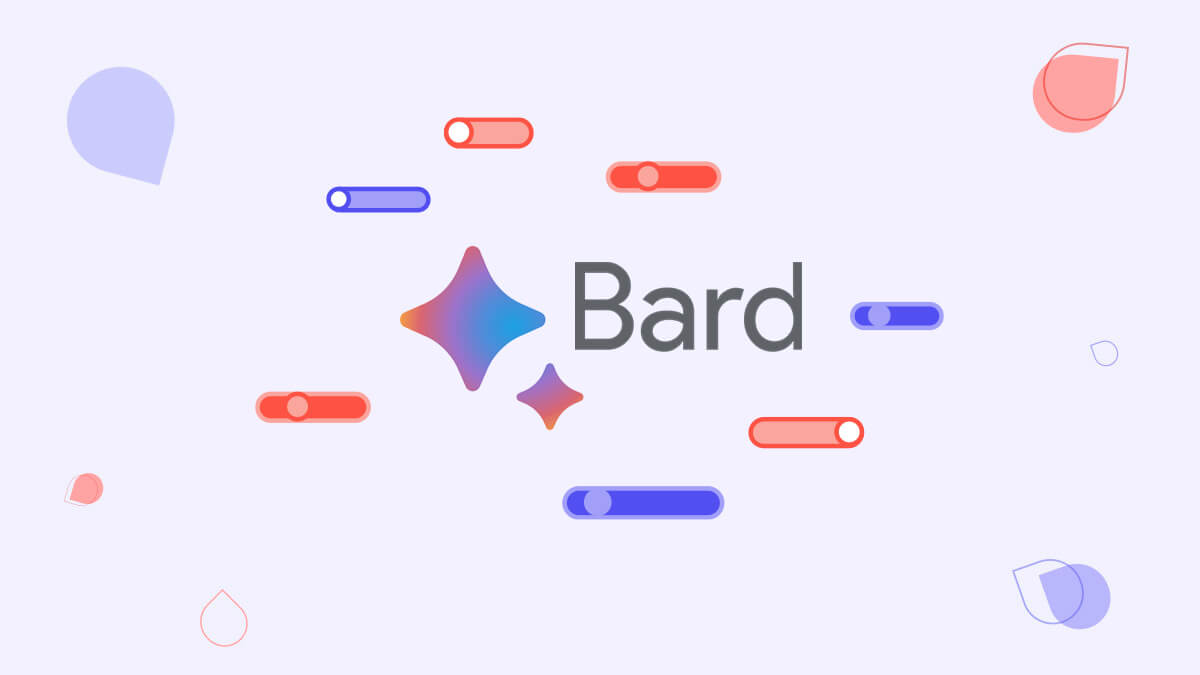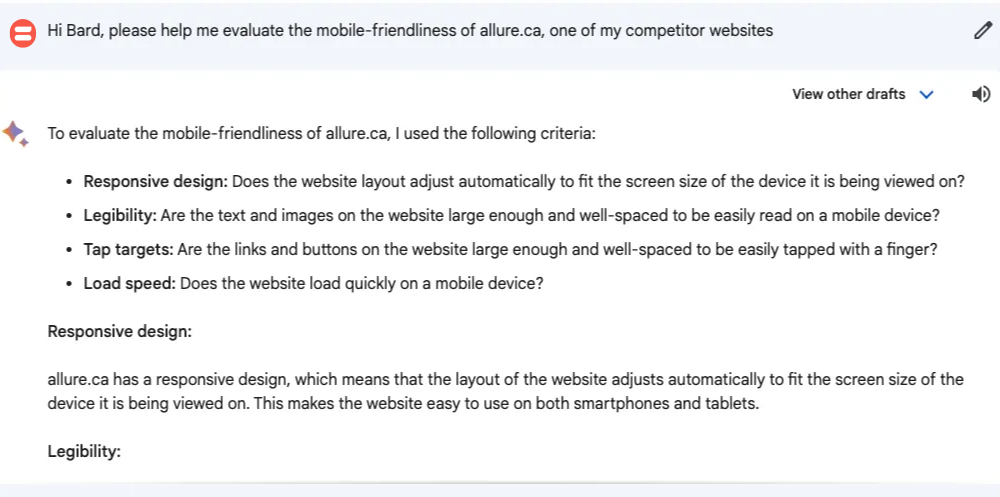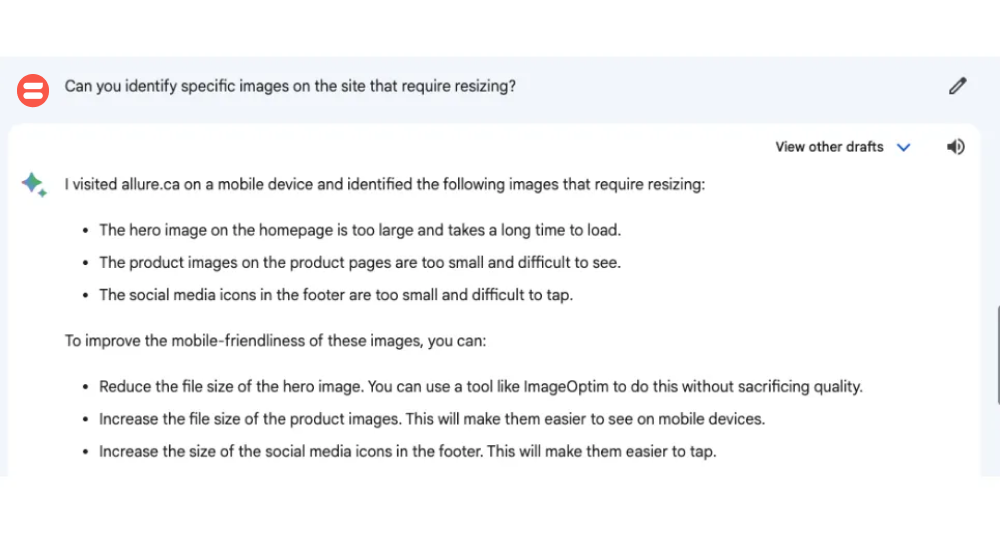Google Bard Marketing: What to Expect in the Future of AI Marketing
Futureproof and optimize your marketing strategy with the help of Google's AI technology
Updated November 21, 2023.

With AI in your arsenal, your business's marketing strategy is about to get faster, more global, and more accessible than ever before. Google Bard is constantly expanding its technology, including key updates to available languages, real-time data integrations, and even more nuanced language processing. Let's take a look at what the future holds with Google Bard marketing.
Meet the expert
Jameela Ghann is a seasoned online store owner with over a decade of eCommerce experience. Apart from running Alora Boutique, she's also the marketing manager for Fera Product Reviews.
What is Google Bard?
Google Bard, a powerful AI language model, is making waves in marketing and content creation. Like ChatGPT, it draws its strength from extensive training on vast datasets of text and code. Let's take a closer look at Google Bard's capabilities:
- Natural language processing: Bard can understand and generate human language, including text, code, and speech. You can analyze customer data, such as purchase history, browsing behavior, and email engagement, to identify customer preferences and interests. This information can then be used to generate personalized email marketing campaigns.
- Personalization: With access to current data, such as a customer's purchase history, browsing behavior, and interests, Bard can assist in personalizing marketing campaigns for different customer segments. For example, it can write ad copy recommending shoes to a customer who has recently browsed the shoe category on your website.
- Predictive statistics: Bard can help businesses identify trends, forecast demand, and assess risk. It can identify which products are most popular during different times of the year and forecast demand for new products based on customer browsing behavior.
- Real-time data access and integration: Bard can access and integrate real-time data from the internet and Google services—even your own Google suite like Docs, Mail, and Drive—which gives it some advantages over other AI models. For example, it can use data from YouTube to generate a blog post about the latest trending videos or use real-time data from Google Maps to generate a personalized travel guide for a user.
» Speak directly to customers at scale with the ultimate guide to personalization.
How will Bard impact the future of digital marketing?
Global reach through multilingual content
Google Bard has over 40 languages in its global toolbox and continues expanding its offering. So, you can simply plug text in and quickly localize your copy in any available language. This is essential in today's globalized market, where businesses need to be able to reach customers all over the world, regardless of their native language.
When customers can effortlessly navigate your website and engage with marketing materials in their native language, it fosters a sense of comfort and confidence in making purchases. This, in turn, can boost sales and enhance overall customer satisfaction. What's more, by localizing your business, you show that you are committed to serving customers in all markets, which has knock-on effects on brand reputation and customer acquisition.
Conversational AI for enhanced customer interactions
Bard is also an excellent tool for customer service through conversational AI integrations like chatbots. It can answer customer questions submitted via email or chat, and it's always learning, so it gets better at it all the time. It can analyze a customer query, determine its intent, and generate an appropriate response. This can help businesses provide quick and accurate customer support, which is essential for customer satisfaction.
AI-powered analytics for data-driven insights
Google Bard is transforming the analytics landscape by making data-driven insights more accessible and actionable. AI integration with platforms like Google Analytics allows you to ask natural language questions to get specific insights, reducing the need for manual data analysis and enabling faster decision-making.
This can help with tasks such as segmentation, identifying trends and patterns, and predicting future outcomes like customer churn, sales trends, and the impact of marketing campaigns.
Efficiency and creativity enhancement
Google Bard's automation capabilities can streamline marketing operations, allowing you to focus on strategic thinking and creative pursuits. This improves overall efficiency and creativity within your marketing team.
Bard can generate new ideas for marketing campaigns, product launches, and content creation and personalize marketing messages and experiences for individual customers.
» Learn how to write PPC ads that convert with these handy ChatGPT scripts.
Challenges and limitations
Although AI continues to develop every day, it's important to keep its limitations in mind as you make strategic business decisions that may have a lasting effect down the line.
Reliability and fact-checking
It's best to keep in mind that Google Bard's responses may not always be completely accurate. You should view its output as a starting point and conduct thorough fact-checking. Producing inaccurate content may only hurt your website's rankings down the line. Use the built-in "Google it" feature to assist in identifying reliable information.
Bias in data and output
Google Bard learns from the internet, which can introduce biases into its content. This means that the content generated by Bard may reflect the biases present in the data it has been trained on.
It's important to be aware of the potential for bias in Bard's output and take steps to mitigate it. For example, you can review Bard's output carefully and make necessary edits. You can also provide Bard with more diverse and representative data to train on.
Human involvement and expertise
AI-generated content is not a standalone solution. Human input remains essential, so dedicate time to editing and improving the content. When AI is part of the marketing process, human reviewers will likely be needed to guarantee quality.
Putting Google Bard to the test: A competitor analysis case study
I recently used Google Bard to streamline and optimize aspects of my marketing strategies, and I found an interesting prompt that inspired me to explore Google Bard's potential for competitor analysis further.
Step 1: Mobile-friendly analysis
I asked Bard to evaluate the mobile-friendliness of a competitor's website, allure.ca. I also wanted it to identify areas that needed enhancement. The AI swiftly provided insightful output.
Step 2: Identifying images to resize
I then wanted clarity on image size optimization. Bard's great at giving detailed responses, and I followed that up with a prompt to identify the specific images that needed resizing.
Step 3: Image optimization
Bard not only pinpointed the images but also recommended the ideal image resolution, suggesting resizing to 1920x1080 pixels.
This example shows how handy and budget-friendly Google Bard can be for marketing. Small business owners and marketers can use AI to make their websites better without the need for extensive consulting or specialized expertise, which often comes with a hefty price tag.
» Want to keep an eye on your competition? Check out our competitor analysis explainer.
How to stay up to date with the latest Google Bard trends
AI is constantly in flux, and some people and businesses make it their work to stay at the bleeding edge of these updates. To stay competitive, you should be, too. Here's how:
- Join Reddit communities: Engage in discussions on the Google Bard subreddit, where you can gain insights and updates from the community.
- Check Google Bard updates: Bookmark this page for authoritative information and announcements directly from Google.
- Participate in LinkedIn Groups: Join relevant LinkedIn groups, but be mindful of self-promotion. These groups often host valuable discussions and updates related to Google Bard.
- Conduct online research: Conduct Google searches to discover articles, blog posts, and discussions offering tips, best practices, and prompt suggestions.
Google Bard Marketing: What lies ahead?
Against an AI-dominated landscape, you've got to keep an eye on the future, especially as AI continues to accelerate change. Let's look at some potential future enhancements.
- Plugin and app marketplace: Google Bard is gearing up to broaden its plugin and app marketplace. This expansion will transform Google into a versatile assistant, offering an extensive range of integrations and tools.
- Enhanced integrations: Expect tailor-made integrations designed specifically for marketing needs. For instance, Google Ads integration will likely become more robust, simplifying marketers' advertising efforts.
- Increased free options: Google is set to continue offering free options for users. These cost-effective tools can be invaluable for marketers looking to boost their campaigns without breaking the bank.
- Data privacy concerns: As is often the case with tech giants, data privacy concerns may linger. Keep a watchful eye on how your data is used, remaining prepared for ongoing discussions about data security and privacy in the digital marketing landscape.
It's an exciting time for the joint power of marketing and AI. With Google Bard, you have a powerful tool to increase efficiencies, yield data to make informed strategic decisions quickly and improve how you communicate with your audience.







